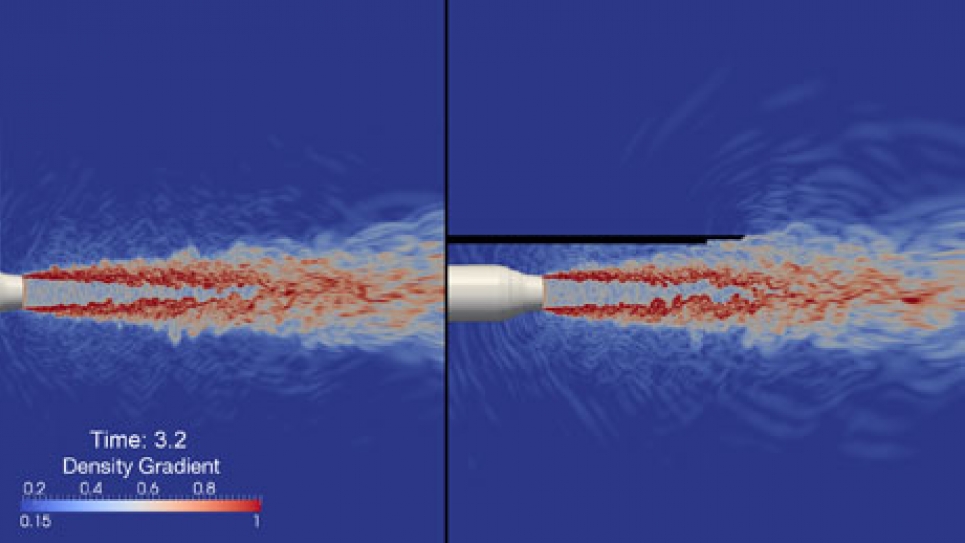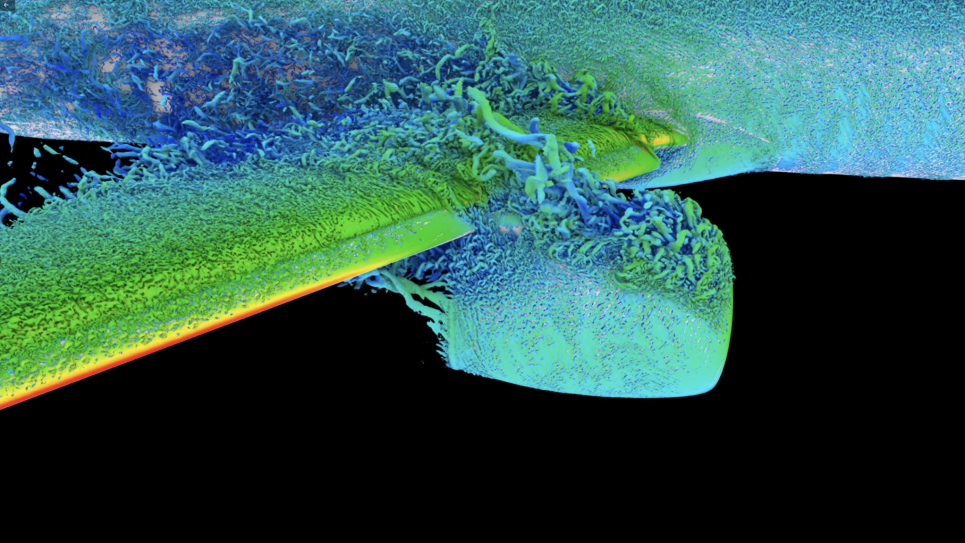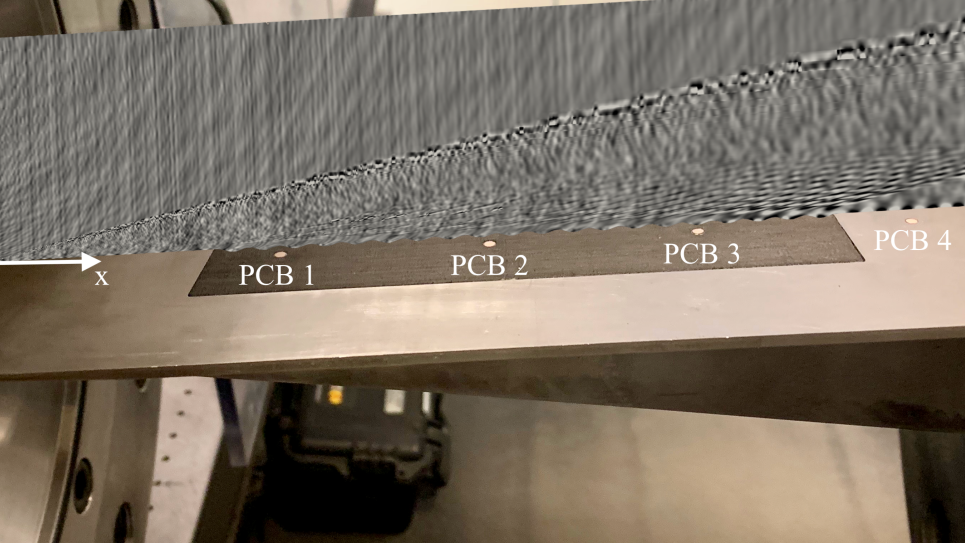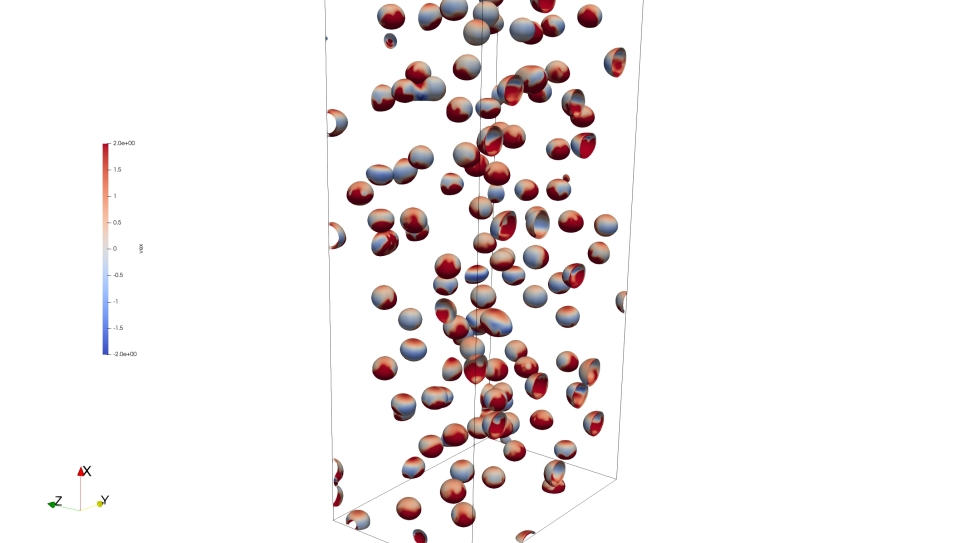
Enabling Green Energy and Propulsion Systems via Direct Noise Computation
Advanced "green" energy and propulsion systems that deliver improved energy efficiency and yields from renewable sources have driven the development of accurate, high-fidelity simulation capabilities at GE Global Research. The inability of current computational fluid dynamics methods to accurately and consistently characterize turbulent mixing processes in shear flows and boundary layer flows has slowed the drive to higher efficiencies and lower emissions. A simulation methodology that captures such phenomena accurately can create a design capability with the potential to break through several barrier technologies.
GE’s recent INCITE work on Large-Eddy Simulations (LES) leveraged the petascale computing enabled to break barriers relating to the aero-acoustics of wind turbine airfoils and aircraft engine jets. GE accelerated its industrial impact by pushing application/validation to realistic conditions and scale, addressing challenges, and extending capability to handle complex system interactions. Through scalability improvements at the ALCF, their past INCITE work demonstrated how this first-principles-based LES capability transforms product development.
Going forward, the researchers will demonstrate the use of scalable LES as an aero-acoustics diagnostic and design tool. Driven by recent advances in jet-engine technologies, they also plan to initiate fundamental work in fan broadband noise. The attention will shift to a harder, more subtle phenomenon from the turbulent sources generated in boundary layers and shear flows to the evolution of turbulent wakes and its interaction with stationary or moving aerodynamic surfaces downstream. For wind turbines, researchers will demonstrate accurate characterization of the complex scaling and variation of turbulent "self" noise sources to create a high-quality/fidelity database, that can be leveraged to improve lower-order noise source modeling. They also plan to push the envelope in scale to attempt 3-D tip flows. For jets, the focus will be on: (a) capturing the fundamental drivers of the next challenges in full-scale realism coming from forward-flight effects, as well as the interactions between the engine and the airframe, and (b) demonstrating the ability of LES to guide active noise control technologies beyond passive features. They expect to improve the prediction and design capabilities for next-generation aircraft engines and wind turbines.


